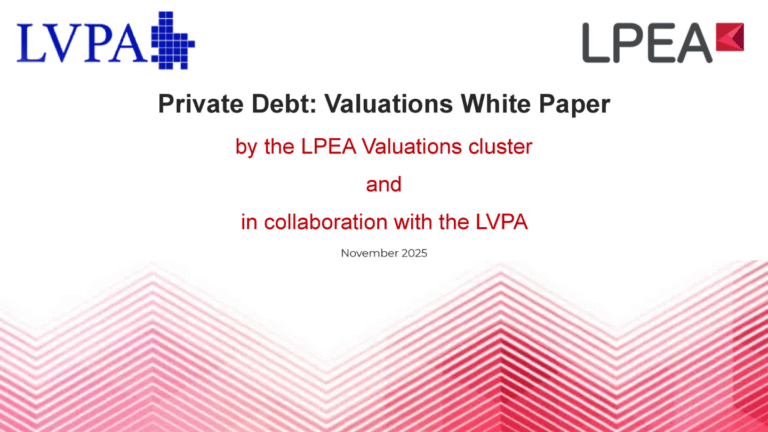Article By Ian J Harcourt, | Country Head and Head of Institutional Banking, Luxembourg at RBS International as published in Insight Out #26
The Science Based Targets initiative (SBTi) is fast becoming the standard for financial institutions looking to commit to a robust and trusted framework for decarbonisation pathways – but research, including our own at RBS International, has found that AIFs continue to struggle with roadblocks when trying to adopt SBTs and find their own path to net zero. Dialogue and bringing all internal and external stakeholders along will allow AIFs to deliver against their climate ambitions and show leadership in the field.
Private capital and the transition to net zero
Private capital is agile and influential in today’s global economy, two key ingredients for delivering serious impact and the transition to net zero. Nowhere is this truer than the green economy and climate action, where AIFs are leading the charge on financing tomorrow’s solutions and technological breakthroughs. We are seeing more and more funds consider climate as an opportunity, not just a risk, and they are viewing the pathway to net zero as an opportunity to realise positive climate, environmental and economic impact at the same time.
Headwinds are preventing progress
The shift in perspective to seeing economic and climate performance as inextricably linked, from a global down to a portfolio company level, has come at a time when there are many economic challenges facing investors. A recent survey 1 of 125 decision makers at AIFs that RBSI conducted, spanning a variety of asset classes, locations and AUMs, confirmed to us that even though 90% of AIFs see long-term value in setting SBTs, the economic conditions have caused timeline for adoption to slip. Regulatory pressure remains a main driver alongside investor pressure, but the short-term view on advantages to SBTs lacks consensus. At RBSI, we think acting soon in spite of the challenges may yield benefits, as highlighted below.
The advantages to pressing ahead/acting now is essential
There will be challenges ahead for AIFs on the journey to net zero, and it will require commitment and dedicated resource to deliver in the face of headwinds. However, this decade is an inflection point, and will determine the possibility of keeping warming to close to 1.5 ˚c and the resulting effect our global economy – up to 20% of the world’s GDP could be lost to climate change by 2050.2
As the world gears up for climate action, the field will become crowded and those who have not moved early will find bottlenecks and scrambles for expertise and opportunities. Stranded assets are looming on the horizon and when everyone is moving at once, there will greater competition.
Institutional investor pressure is a commonly cited concern for AIFs when discussing their climate ambitions and current position, and we see this trend continuing – moving now to avoid bottlenecks will ensure that AIFs do not end up stuck between the rock of investors unsatisfied with climate action taken, and the hard place of high costs due to competition for the resources needed to decarbonise.
What can AIFs do to overcome the barriers?
Some may think that adopting targets in the face of today’s many headwinds will be a challenge, but I believe by following a simple three-step plan AIFs can keep the momentum for implementation going.
Step One: Continue climate conversations
o Discuss SBTs internally and bring all stakeholders along on the journey, helping to understand the advantages to taking action now and what the roadmap to validation and implementation will look like.
o Engage with industry bodies and events to ensure you are hearing from a breadth of perspectives and experiences.
o Assess what comparable AIFs are doing to ensure you stay ahead of investor pressure.
Step Two: Adopt a sense of urgency
o Make a public commitment to adopt SBTs, beginning a process that gives you 24 months to submit your targets to the SBTi for validation.
o Address your ESG resources, and ensure you have hired the right specialists or engaged with external support to deliver against your ambitions.
o Understand the roadblocks ahead on your path to net zero, and size up what it will take to break through them.
Step Three: Maintain focus on the future
o Submit your targets to SBTi for validation, giving you and your investor’s confidence that you have a robust and science-based path to decarbonising your business.
o Take action against your milestones: the mandated SBTi timeframe is 5-10 years.
o Continue internal communications with all stakeholders – SBTs are challenging and will require endorsement and expertise from across your business.
o Disclose your emissions annually and monitor progress against your targets. Remaining accountable to each other, our investors and the public domain is a time-tested path to delivering powerful results.
Believe in an open & trustful dialogue
Not all resources need to be competed over – knowledge can be shared through dialogue. Climate change is a monumental challenge that will take cooperation across all spheres of the public and private sectors to tackle – it is a team sport, one in which we will all win and lose together as the potential effects are so vast . We have seen an amazing coming together of nations, companies, research bodies and financial institutions that would be unheard of in other areas and this has led to great progress but we must keep the conversation going to learn from each other and hold each other accountable.
An open & trustful dialogue is crucial to delivering the right outcome on climate, and many institutions, including my own, readily share our experiences of the goal-setting and validation process and encourage all participants in the AIF industry to keep communicating and learning at opportunity.
Source 1: Stay the Course RBSI SBTs report
Source 2: ‘This is how climate change could impact the world economy,’ World Economic Forum, June 2021




